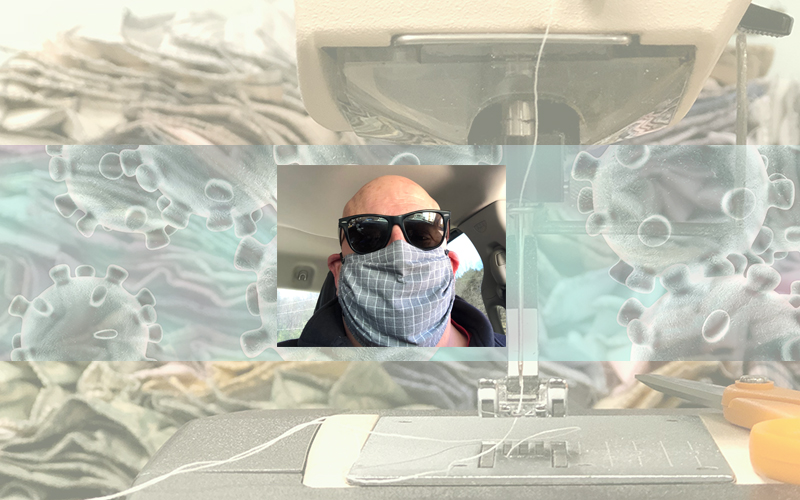At a recent press conference, Vermont Health Commissioner Dr. Mark Levine asked all Vermonters to wear cloth masks in public, even if they are showing no symptoms of sickness.
Levine said, “Wearing a face mask can help people from spreading the virus,” after mentioning that an infected person can spread coronavirus days before symptoms develop. According to the Vermont Department of Health (VDH), facial coverings are not limited to medical masks. Any well-secured cloth that covers the mouth and nose, such as a bandanna or scarf, will suffice as a mask/facial covering.
In light of this recommendation, The Valley Reporter has compiled mask-wearing guidelines and information from the Vermont Department of Health (VDH). These four guidelines are designed to help people stay safe and prevent further spread of the virus.
1. Recognize that wearing a mask is not a substitute for physical distancing and other prevention measures.
According to the VDH, people should maintain at least 6 feet distance away from others even when wearing a mask. The mask is an added measure of protection, not a replacement for other safety measures.
2. Know when you need a mask and when you don’t.
The VDH says masks are useful for second-hand contact-prone outings. For instance, wear a mask when visiting a grocery store, pharmacy or hospital. Additionally, wear a mask if walking on a crowded street or using a taxi or public transportation to travel. At home, wear mask if you are sick or if there are other people in the house are sick.
You do not need to wear a mask if you are going for a solitary walk in the woods or in your neighborhood. However, the VDH suggests you bring a mask on these outings in case you encounter other people on your walk.
3. Know what makes a good mask.
According to the VDH, a mask or cloth face covering should fit snugly but comfortably against the side of the face, be secured with ties or ear loops, include multiple layers of fabric, allow for breathing without restriction and be able to be laundered and machine dried without damage or change to shape.
4. Proactive proper mask-wearing etiquette.
In order to prevent infection, it is important to remove and store your mask properly and safely. To do this, do not touch your eyes, nose and mouth when removing it, immediately wash your hands after removing it, and don’t put it where others can touch it or on countertops or tables.






